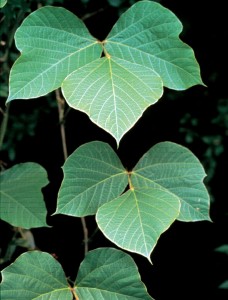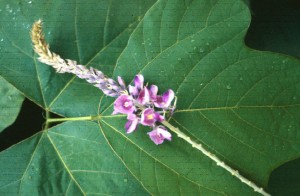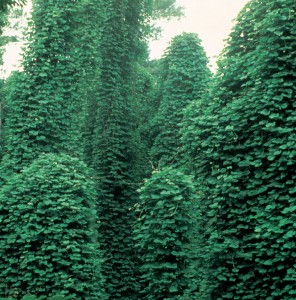Kudzu
Pueraria Lobata
Kudzu
Native Origin: The “Vine That Ate the South” had a lot of help getting established in the U.S. Originally introduced from China as an ornamental vine in 1876, its use as a fodder crop in Japan created more interest and, in the 1930s kudzu was widely promoted as the crop that would allow farmers to take up a life of leisure. Kudzu’s speedy growth, high-nitrogen-content stems and leaves and its drought tolerance were heavily promoted by the Soil Conservation Service, which paid farmers to plant the crop that “works while you sleep”. But the high hopes never panned out, for kudzu was difficult to bale as hay and easily damaged by grazing cattle. Even as farmers realized kudzu was no cure-all, the 73 million seedlings planted in the Southeastern U.S. from 1935 to 1941 responded to favorable growing conditions and absence of any predators. Kudzu simply grew and grew and grew.
Description: The vigorous perennial deciduous vine is a member of the pea family. Alternate leaves are compound with leaflets either palm-shaped or lobed into two or three portions. The pea-like flowers are one-half inch long and appear in long clusters. The very fragrant purplish flowers appear from summer through early autumn and are succeeded by flattened brown, hairy pods, each containing three to 10 seeds.
Habitat & Ecological Impacts: Although initially not considered hardy outside of the deep south (USDA Zone 7), kudzu now occurs to central Illinois and northern New York. It grows well in most soils and under a wide range of conditions, but is especially vigorous along forest edges, roadsides, and disturbed areas in full sun. Kudzu replaces all other vegetation by smothering everything under a dense blanket of leaves. Kudzu can and does grow over buildings, power lines, trees, shrubs and open fields. The vines can grow up to 50 feet per year with stems that are one-half to 4 inches in diameter on vines that can extend up to 100 feet from the crown. The massive extend up to 100 feet from the crown. Massive taproots, up to seven inches in diameter and six or more feet in length, can weigh more than 400 pounds, and each root crown can produce up to 30 vines. Seed production varies greatly, with vines growing in full sun and climbing on sturdy structures able to produce up to 1800 seeds per square meter of soil surface. Kudzu also reproduces vegetatively by root runners, by rhizome, and by extension of vines that can root into the soil to produce new crowns.
Manual Controls: Repeatedly cutting or mowing the vines just above ground level can help reduce invasiveness and retard or prevent seed production.
Chemical: General use systemic herbicides, such as glyphosate (Roundup), triclopyr (Garlon), and others offer effective control. Vines should be sprayed as high as possible. Treatment and control measures may require a number of years due to extensive root development, suckering and continued seed viability.
Comments are currently closed.



